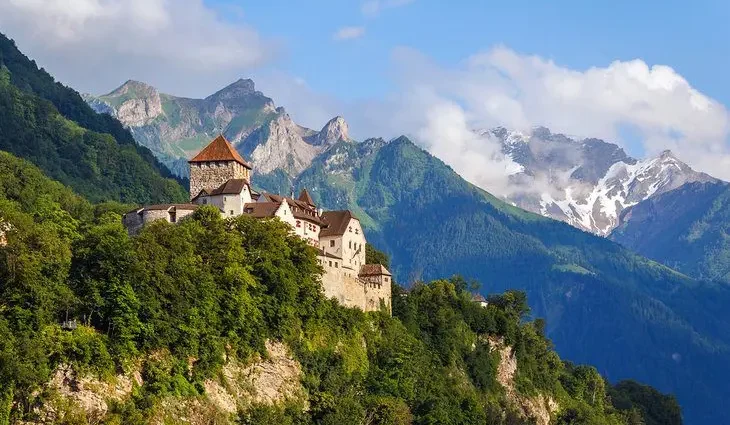Contents
This tiny German-speaking microstate is sandwiched between Switzerland and Austria – and many miss it or skip it when visiting Europe, thinking it doesn’t have much to offer.
The truth, however, is that Liechtenstein has plenty of beautiful places to photograph: from rolling mountains that go on forever and green valleys just as beautiful as its neighbors to great ski slopes and castles and historic churches.
See this list of picture-perfect places to visit in Liechtenstein that are perfect for a photo aficionado.
1. Vaduz

Like a picture from a storybook, Vaduz Castle sits on a hill in the Alps mountains, with a background of bluish mountains and snow-covered peaks. The official residence of the Prince of Liechtenstein, the castle is surrounded by beautiful gardens. Originally built in the 12th century, Vaduz castle went through a massive fire and was later reconstructed and expanded.
- Read More: Top-Rated Tourist Attractions in Liechtenstein
2. Malbun
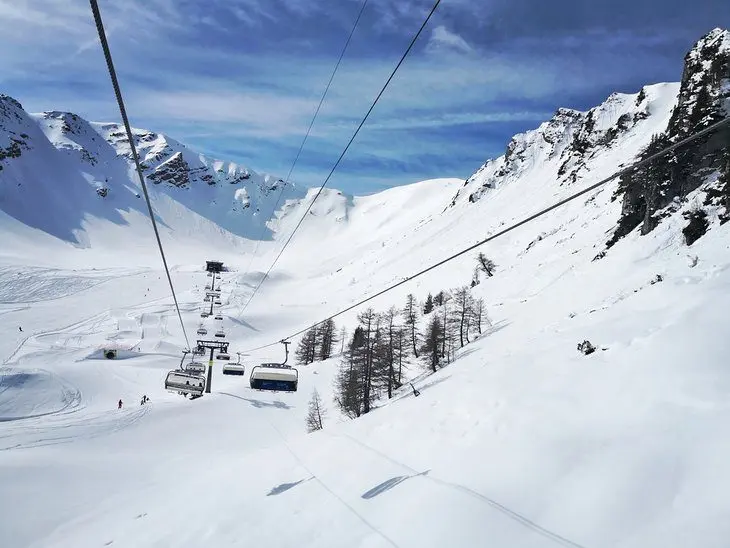
The only skiing and snowboarding resort in Liechtenstein, Malbun also offers the best snow conditions in the country. Located just two kilometers from the Austrian borders and with an altitude of 1,600 meters above sea level, Malbun is surrounded by breathtaking snow-covered mountains and some of the best views over the Alps you’ll encounter in the area.
3. Balzers
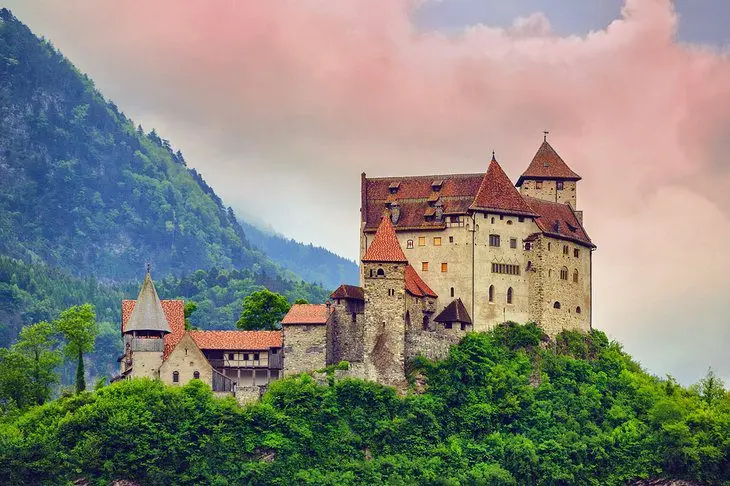
Another stunning image, the Gutenberg Castle is one of only two medieval fortifications in Liechtenstein still standing. It’s set in the town of Balzers, and started its life as a medieval church and cemetery. By the 12th century, fortification walls started to go up, and towers were added. After being severely damaged during the Swabian War and then a fire, the castle was restored and is now a museum open to the public. Some of the best pictures are taken from a distance, capturing the whole castle and surrounding hillsides.
4. Hinterschellenberg

The tiny village of Hinterschellenberg (also Hinterer-Schellenberg) is home to many unnamed wooden structures, including one-room churches dating back a couple of centuries. The village is part of the Schellenberg municipality, which sits on the banks of the Rhine and has a population of just over 1,000 residents.
5. Sücka
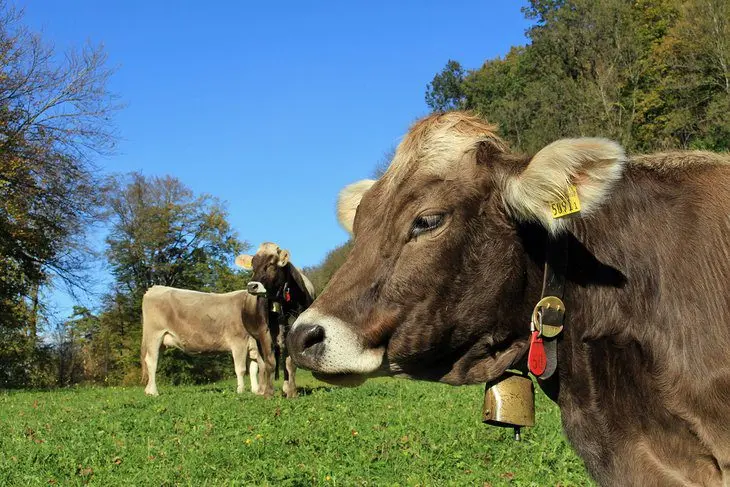
The village of Sücka is best known for its green rolling hills; free-roaming cows with giant bells around their necks; and never-ending, unmarked hiking trails. A sled run starts right outside the only hotel at the top of the mountain, sitting at 1,400 meters above sea level on a traditional Alpine pasture. Nearby river Samina is a popular rafting destination.
6. Steg
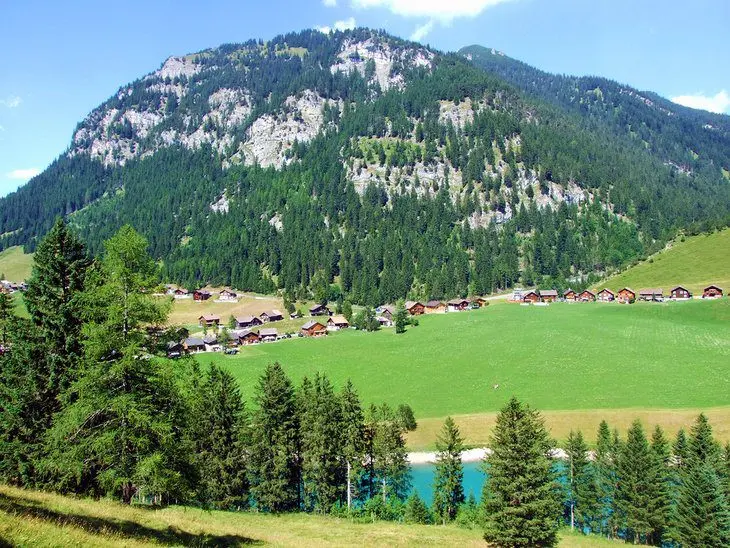
Located between Malbun and Vaduz, the small village of Steg is located near the picturesque Gaenglesee lake, 1,312 meters above sea level. Once a mountain pasture for local farmers, the village has become an idyllic hiking destination and the starting point for the 15-kilometer cross-country route that leads to the Valünatal valley.
7. Sareis
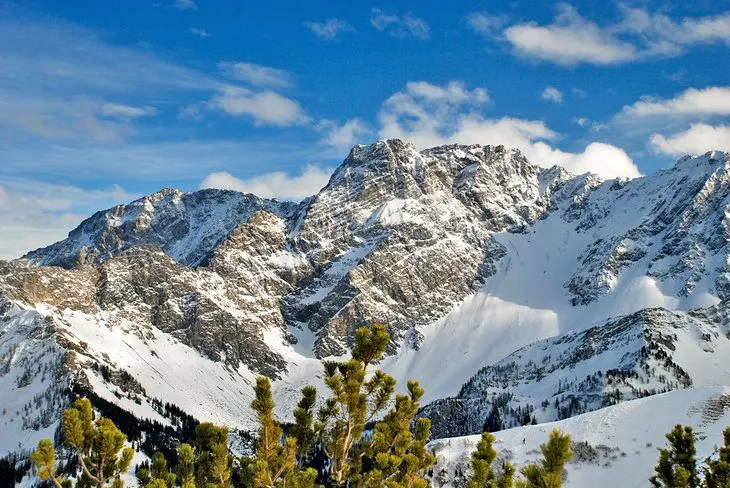
The small Alpine village of Sareis sits 400 meters below the mountain of the same name. A popular starting point to hikes with views over the Rhine Valley and the Augstenberg, Sareis also has a chairlift that takes you to the top of the mountain and its scenic restaurant.
8. Triesenberg
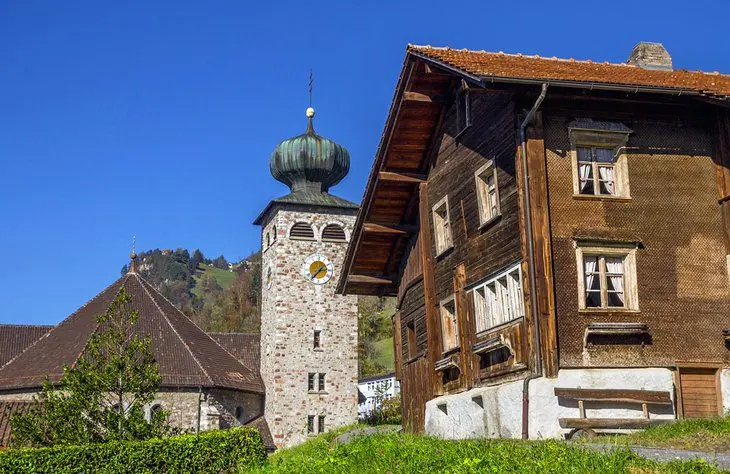
The Triesenberg village is one of the most picturesque municipalities in Liechtenstein. Surrounded by lush forested hills and views over the Rhine Valley, Triesenberg offers a charming town center and gravel paths and trails that surround the village.
9. Alte Rheinbrucke
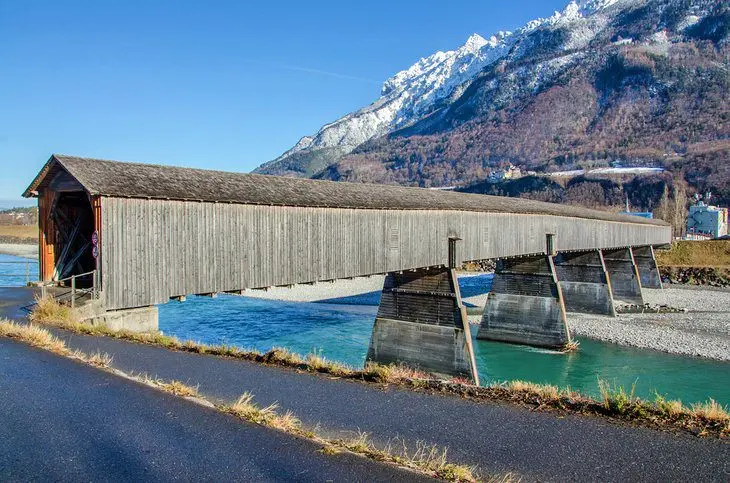
A 135-meter-long, old, wooden-covered bridge that connects Vaduz with Sevelen, the Alte Rheinbrucke is the only surviving wooden bridge that crosses over the river Rhine. All the other 12 wooden bridges over the river were destroyed by floods or age over the years, and Alte Rheinbrucke had to be reconstructed in the early 1900s and now only allows foot traffic and bicycles.
10. Augstenberg Mountain
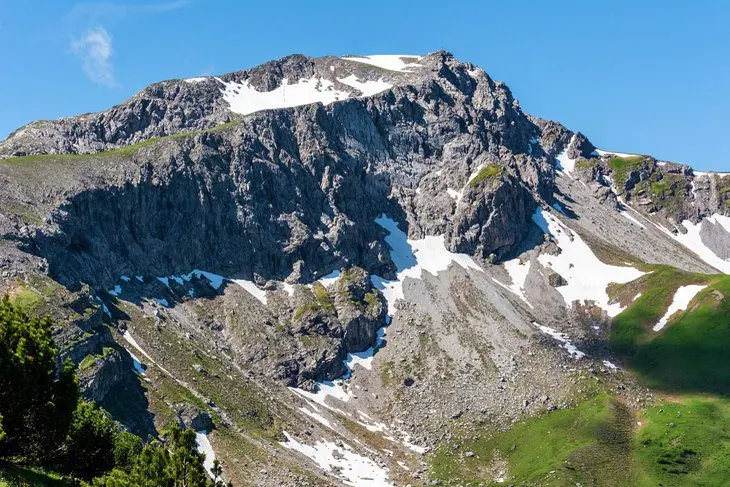
One of the most popular mountain hike destinations in the country, the Augstenberg is beautiful at any time of the year. Once at the top, the sweeping views from the 2,354-meter summit open over the lofty surrounding peaks. The Eastern Alps, where the mountain is located, is known for broader mountains often covered in forests and deep green valleys.
11. Silum
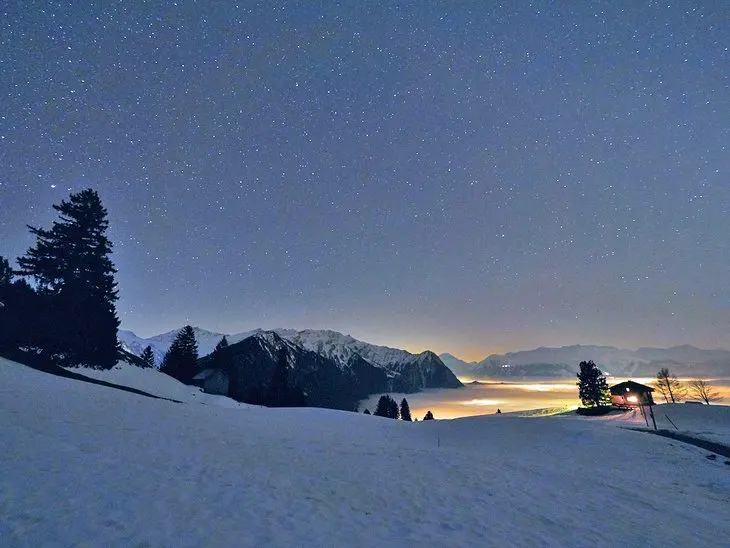
The foggy Rhine Valley is just as stunning at night as it is under the sun. Surrounded by green fir forests, the Silum area is a favorite among hikers for the open views over the snow-capped Swiss Alps. Timber barns and mountain huts dot the rolling hills and offer refuge for ambitious overnight trekkers.
12. Eschen
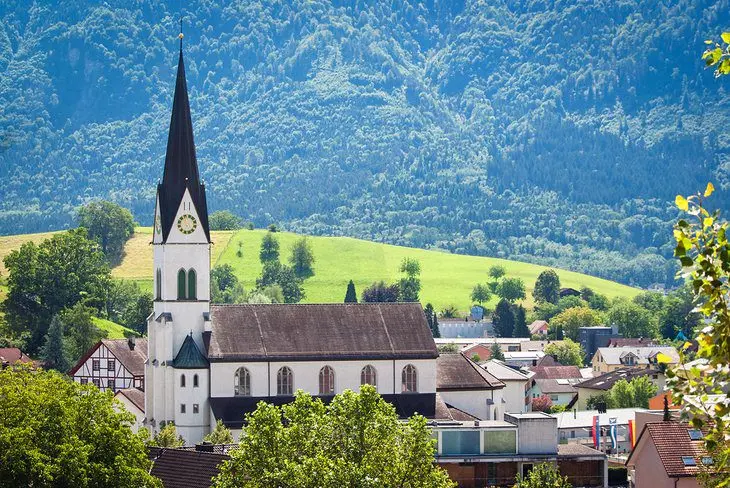
The Roman-catholic parish of St. Martin Church is Eschen’s only church. Despite only having 4,300 residents, Eschen is Liechtenstein’s fourth-largest town and home to a major train station.
13. Gaflei
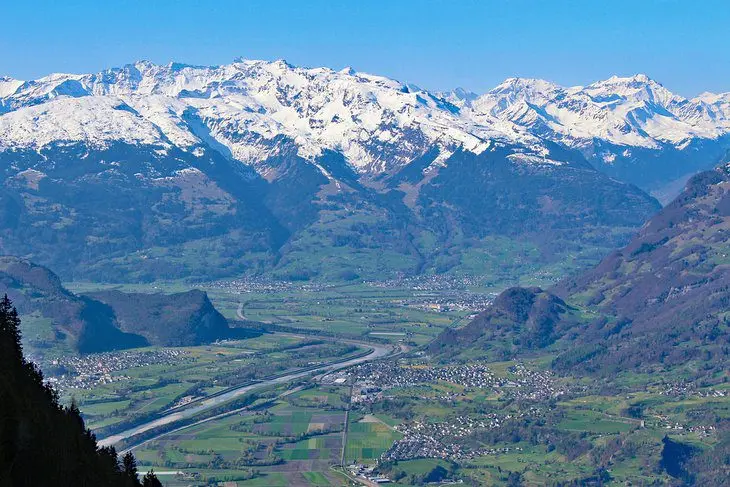
The view from the Gaflei panorama tower extends all the way into Switzerland, over the Apenzell Alps. Gaflei is one of the highest towns in the country and the starting point for many hikes, including the steep Alpine Fürstensteig trail. Because of its altitude, Gaflei experiences fresh Alpine breezes all year long, and it’s a popular destination as a health resort.
14. Schaan
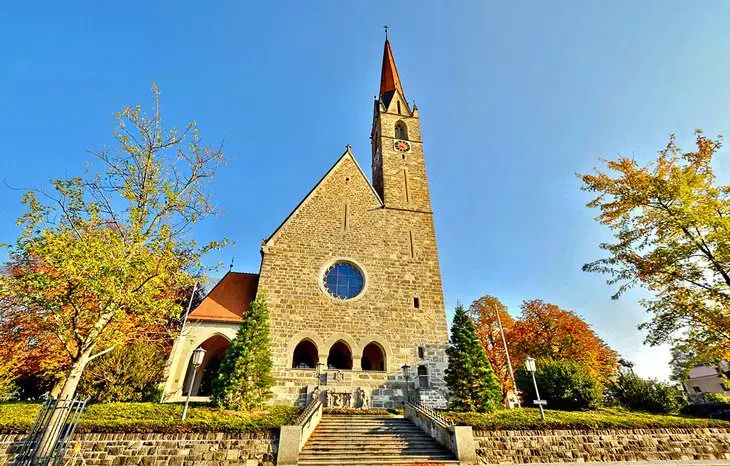
Sitting against the Three Sisters mountain range, the Church of St. Laurentius and its Gothic spire are the town’s most important landmarks. Visitors can take the five-kilometer “cultural trail of Schaan,” a self-guided tour through some of the most important historical and cultural landmarks in town.
15. Fürstin-Gina Trail

The winding roads of the Fürstin-Gina trail start at the top chairlift station at Sareis mountain. From here, they descend into scenic pastures, Alpine valleys covered in wildflowers, and green cliffs with sweeping views over the surrounding peaks. You can capture beautiful pastoral images of the countryside.
16. Mitteldorf
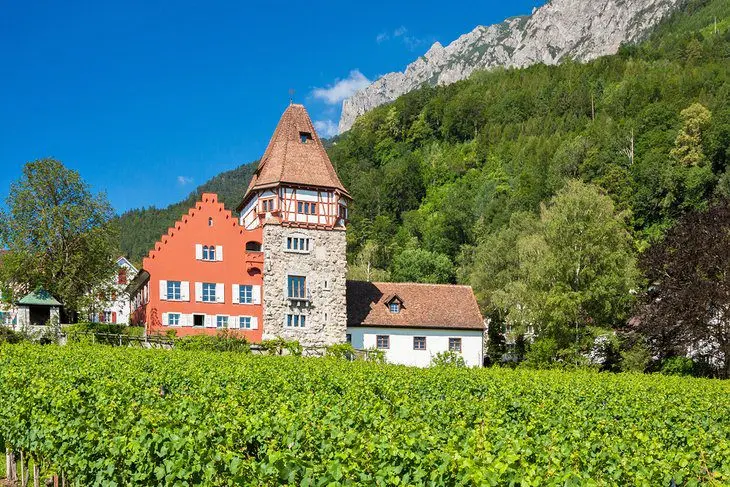
The Mitteldorf area of Vaduz houses some of the oldest structures in the city, including the very famous Red House. Built in 1338, this deep-red gabled building is attached to a more recently added tower. Although this is a private house, so no tours are allowed, it still makes for an impressive background for photos.
17. Upper Castle Ruins (Obere Burg)
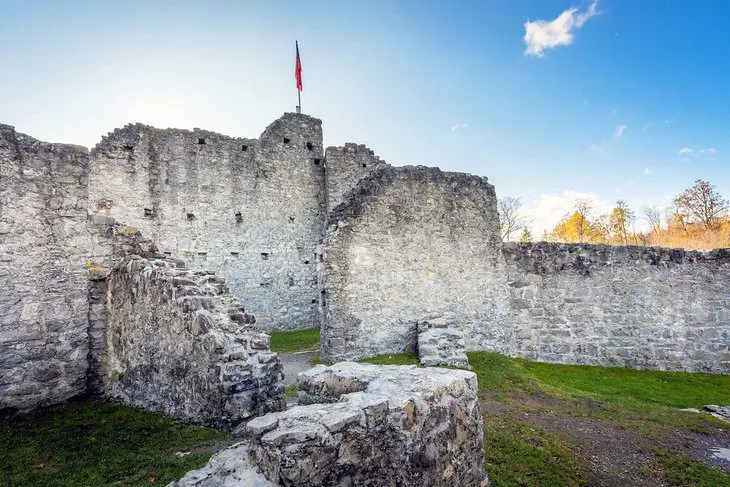
The largest castle ruins in the country (there are three) date back to the 1200s, but it was abandoned by the 16th century and left to fall into ruins soon after. Today, the castle is permanently open to the public, who can arrive at any time to explore and photograph the surroundings.
18. Samina Alpine Valley
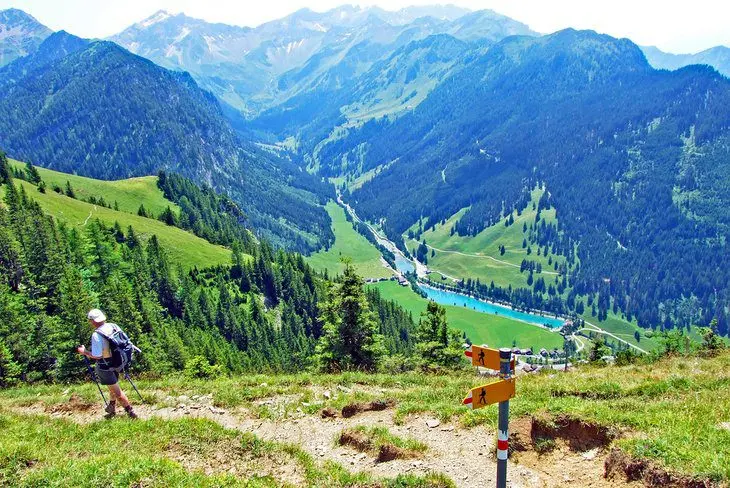
Sitting at the foot of the Drei Schwestern (The Three Sisters) mountain, the Samina Valley and the river that shares its name are major attractions for nature lovers. The Bödastrasse Alpine trail is particularly popular, taking you through green rolling hills to connect to other paths all the way to the Austrian border.










